|
By Graham K. Rogers
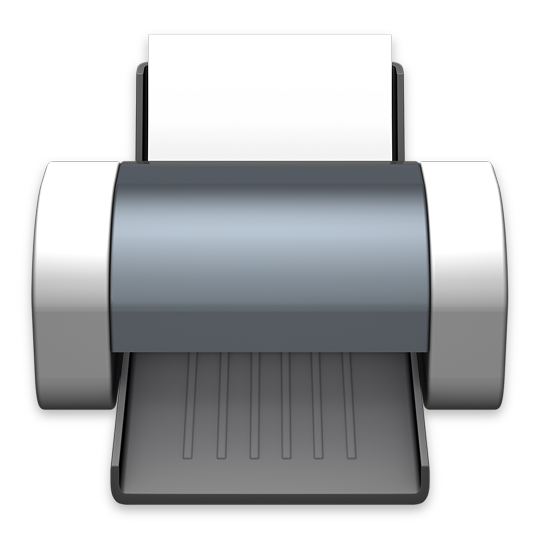
In macOS Sierra, there have been some changes to certain System Preferences panels. Printers & Scanners, provides settings that allow fine-tuning for use of printers and scanning devices. The panel is similar to that in the last two versions of OS X. The way printers may be connected uses simple information for home users. There are features available for those with more complex needs, such as in offices.
The Printer & Scanners preferences panel allows users to control the setting up and use of printers and scanners attached to the computer (or that the computer may access via a network). Settings may be different depending on computers, networks and printer being used. There appear now to be no references to fax machines although attributes for these may be hidden and will become active if needed.
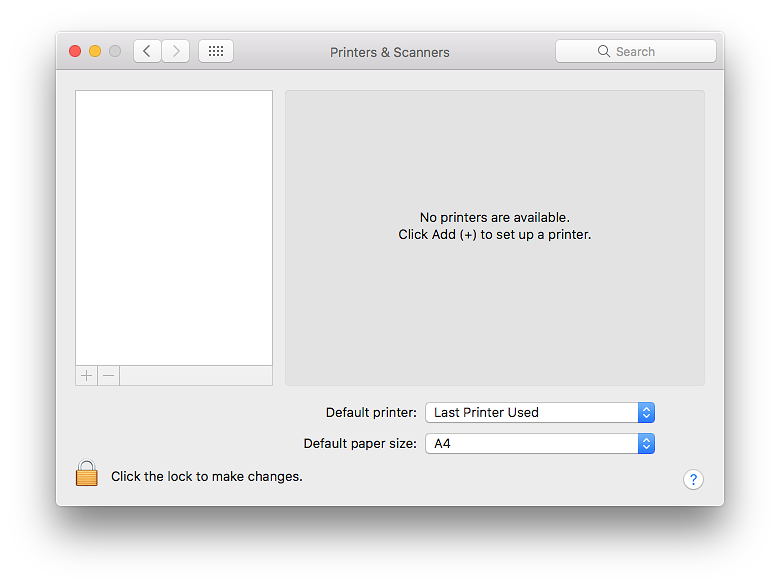
Clicking on the printer icon in System Preferences reveals a 3-part panel. To the left is a pane that will show any installed printers or scanners; the main section provides details of printers or scanners that have been highlighted in the left-hand pane. On a new installation, no devices will be identified.

As part of information displayed about an installed printer, two buttons are available: "Open Print Queue" and "Options & Supplies..." which will display information including supply (ink) levels. The information on the panel will depend on the specific printer (manufacturer/model) and any software installed.
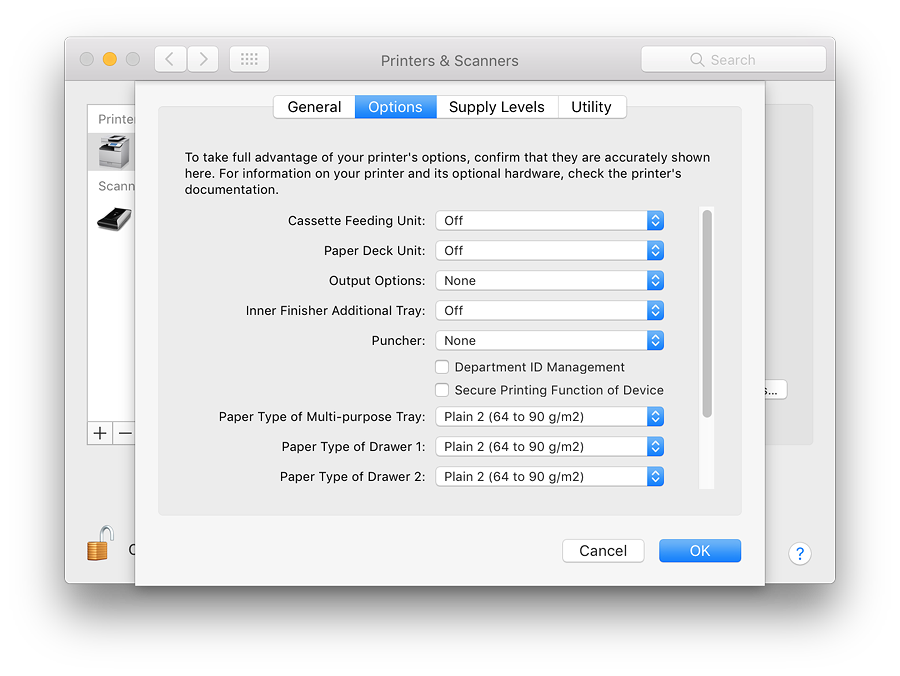
Below the printer information is a checkbox to allow the sharing of a connected printer (including a USB printer) on the network. A button alongside allows the user to access Sharing preferences to turn on Printer Sharing.
At the bottom of the panel are two buttons
- Default printer (last printer used or another option, including an IP number)
- Default paper size - on a new installation this may show US Legal so may need to be changed to A4 for those users in other regions. There are 14 paper size options shown on my installation.
The main panel will change if a scanner is selected. The scanner is identified at the top of the panel and a button below a small image of the scanner is marked Open Scanner. Only blank panels will be shown if the device is not connected.
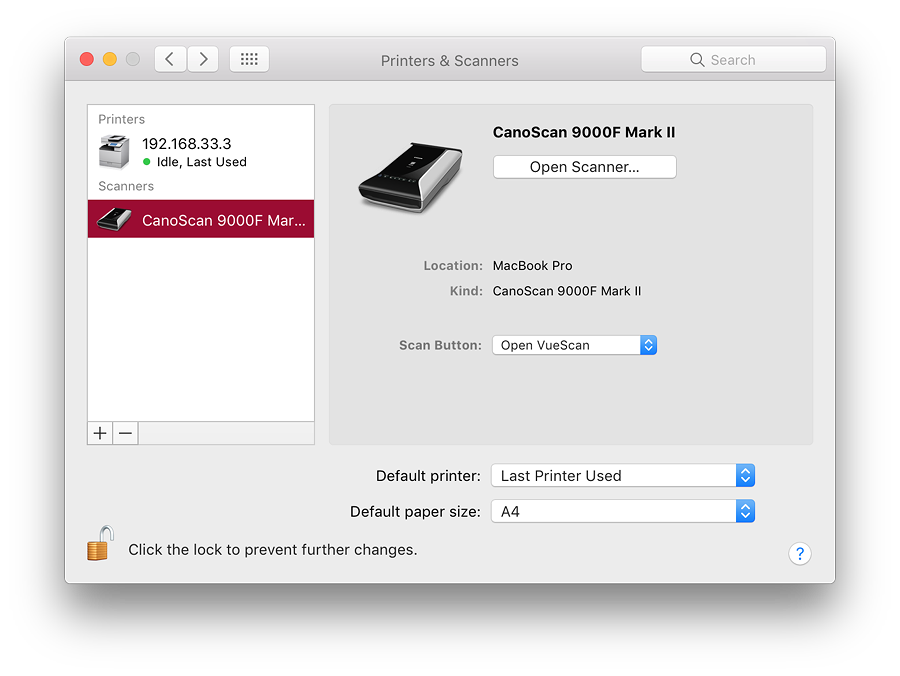
A Scan Button below the device identification (Location; and Kind) offers several options:
- Open scanner window
- Open Preview
- Open Image Capture
- Other (using this I am able to select the VueScan software I use)
- No application
To add a printer (or other suitable device), click on the + icon at the bottom left when the printer is connected. Depending on the installation, either a simple menu appears or a panel that shows different types of connection.

The simple menu will identify any printers available either linked by cable or on the same network (Nearby). The 3 section panel shows Default, IP and Windows. Default shows any printers that may be shared or are already installed, including USB printers.
The panel marked IP has two sections. At the top is a box for entering a printer IP number. This can be found in the settings of a suitable printer (or by asking a technician). Below is a button for selecting which protocol to use: AirPrint, LPD or Line Printer Daemon (default on my computers), Internet Printing Protocol (IPP), or HP Jetdirect - Socket.

The AirPrint option is a newly available Apple technology that allows printing without the need to download or install drivers. An Apple Support document outlines the technology. Only applies to certain printers according to the document. It might be that more will be added as the technology is rolled out.
Although it is not on the list, I tried to add the office Canon printer, but I was warned that it already existed and was asked if I wanted to set up a new printer. The setup process appears to be similar to the other methods available.
Below the Protocol settings is a text box for "Queue" which is left blank for the default queue. The lower half of the panel has spaces for name/location of the printer
The final installation method, Windows, is for working with printers installed in a Windows workgroup environment. The panel has 2 panes for entering information.
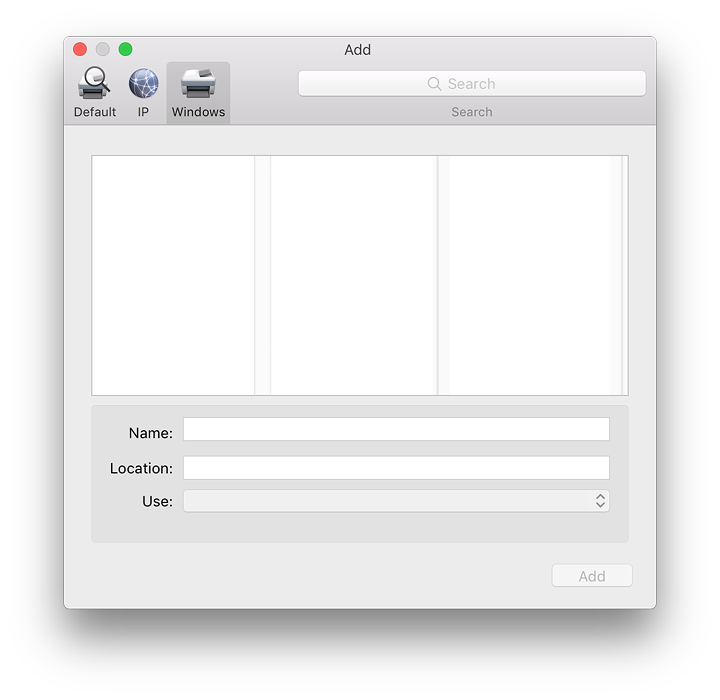
When I connected to a WiFi network, other printers were identified and I was able to add them. If the software is unavailable, OS X may offer to install generic printer software instead or will use the already installed Gutenprint drivers.
Devices installed in the Printers and Scanners preferences will be available to all users of the computer: in all user accounts.
Note: in earlier versions of OS X some users reported that when trying to add a printer in a user account, a dialogue panel appeared asking for Admin name and Password to be entered, but that it was not possible to add any text. This may be resolved by Cancelling the action and quitting System Preferences. In the Admin account, open Printers & Scanners preferences; delete any printers no longer needed; and add the new one. Log out of the Admin account and return to normal working in the user account.
Some users may also wish to try the CUPS software that is installed with all Macs. This was open source, but was purchased by Apple a couple of years ago. By entering 127.0.0.1:631 in a browser (if enabled) a printer management system is made available. CUPS may not be available on a new installation. A user would need to run the command,
cupsctl WebInterface=yes
in Terminal first.
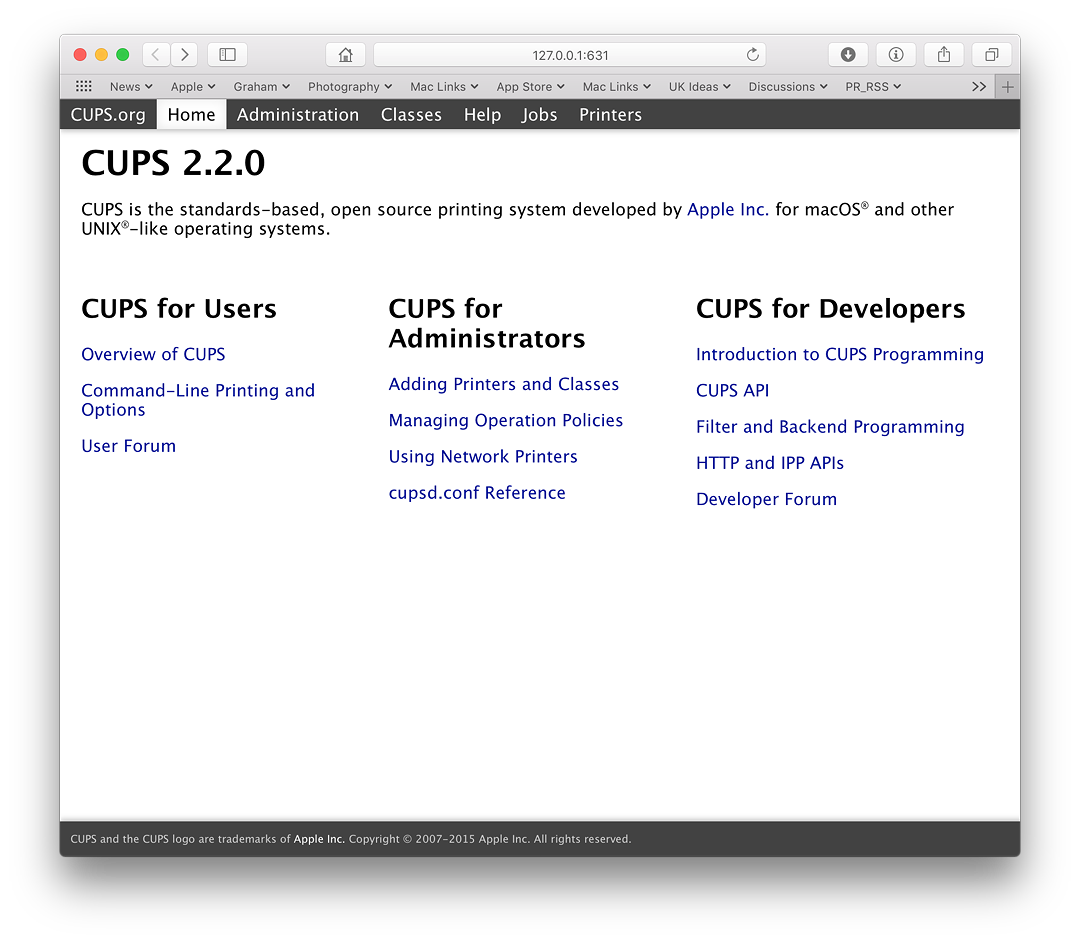
See Also:
How to access your Mac's printer from anywhere (Topher Kessler, MacIssues)
See Also:
Accessibility (1) - General and Vision
Accessibility (2) - Media, Hearing and Interacting
Accessibility (3) - Interacting: Switch Control and Dwell Control
App Store
Bluetooth
CDs & DVDs
Date & Time
Desktop & Screensaver
Displays
Dock
Energy Saver
Extensions
General
iCloud
Internet Accounts
Keyboard
Language & Region
Mission Control
Mouse
Notifications
Security & Privacy
Sharing
Siri
Sound
Spotlight
Trackpad
Graham K. Rogers teaches at the Faculty of Engineering, Mahidol University in Thailand. He wrote in the Bangkok Post, Database supplement on IT subjects. For the last seven years of Database he wrote a column on Apple and Macs. He is now continuing that in the Bangkok Post supplement, Life. He can be followed on Twitter (@extensions_th)
|











